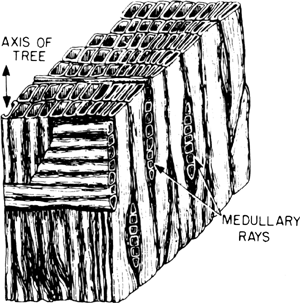ray
11. Maths a straight line extending from a point
2. a thin beam of electromagnetic radiation or particles
3. any of the bony or cartilaginous spines of the fin of a fish that form the support for the soft part of the fin
4. any of the arms or branches of a starfish or other radiate animal
5. Astronomy any of a number of bright streaks that radiate from the youngest lunar craters, such as Tycho; they are composed of crater ejecta not yet darkened, and extend considerable distances
6. Botany any strand of tissue that runs radially through the vascular tissue of some higher plants
ray
2 any of various marine selachian fishes typically having a flattened body, greatly enlarged winglike pectoral fins, gills on the undersurface of the fins, and a long whiplike tail. They constitute the orders Torpediniformes (electric rays) and Rajiformes
ray
Music (in tonic sol-fa) the second degree of any major scale; supertonic
Ray
11. John. 1627--1705, English naturalist. He originated natural botanical classification and the division of flowering plants into monocotyledons and dicotyledons
2. Man, real name Emmanuel Rudnitsky. 1890--1976, US surrealist photographer
3. Satyajit . 1921--92, Indian film director, noted for his Apu trilogy (1955--59)
Ray
2 Cape. a promontory in SW Newfoundland, Canada
Collins Discovery Encyclopedia, 1st edition © HarperCollins Publishers 2005
ray
[rā] (astronomy)
One of the broad streaks that radiate from some craters on the moon, especially Copernicus and Tycho; they consist of material of high reflectivity and are seen from earth best at full moon.
(mathematics)
A straight-line segment emanating from a point. Also known as half line.
(optics)
A curve whose tangent at any point lies in the direction of propagation of a light wave.
(physics)
A moving particle or photon of ionizing radiation.
(vertebrate zoology)
Any of about 350 species of the elasmobranch order Batoidea having flattened bodies with large pectoral fins attached to the side of the head, ventral gill slits, and long, spikelike tails.
McGraw-Hill Dictionary of Scientific & Technical Terms, 6E, Copyright © 2003 by The McGraw-Hill Companies, Inc.
medullary ray, pith ray

medullary rays
McGraw-Hill Dictionary of Architecture and Construction. Copyright © 2003 by McGraw-Hill Companies, Inc.